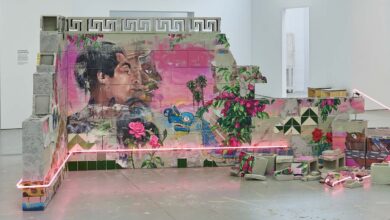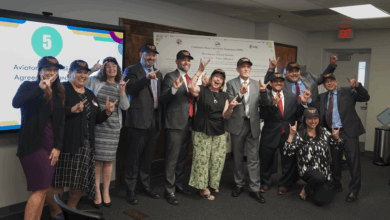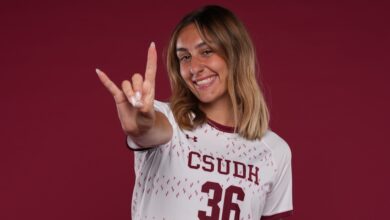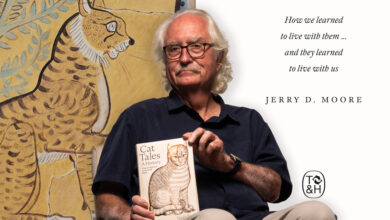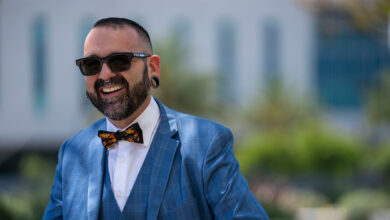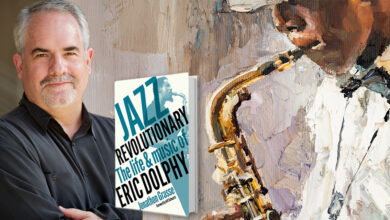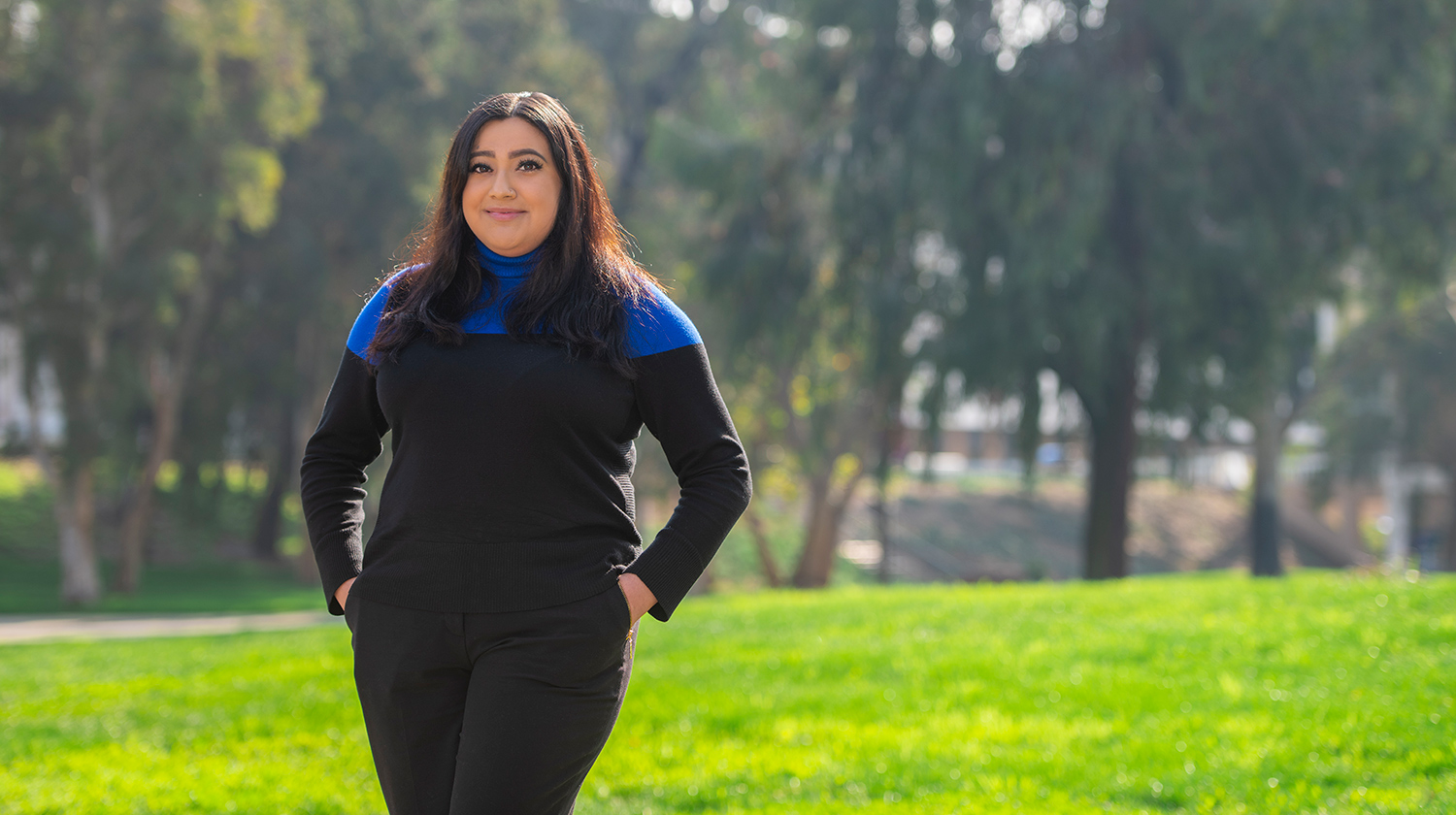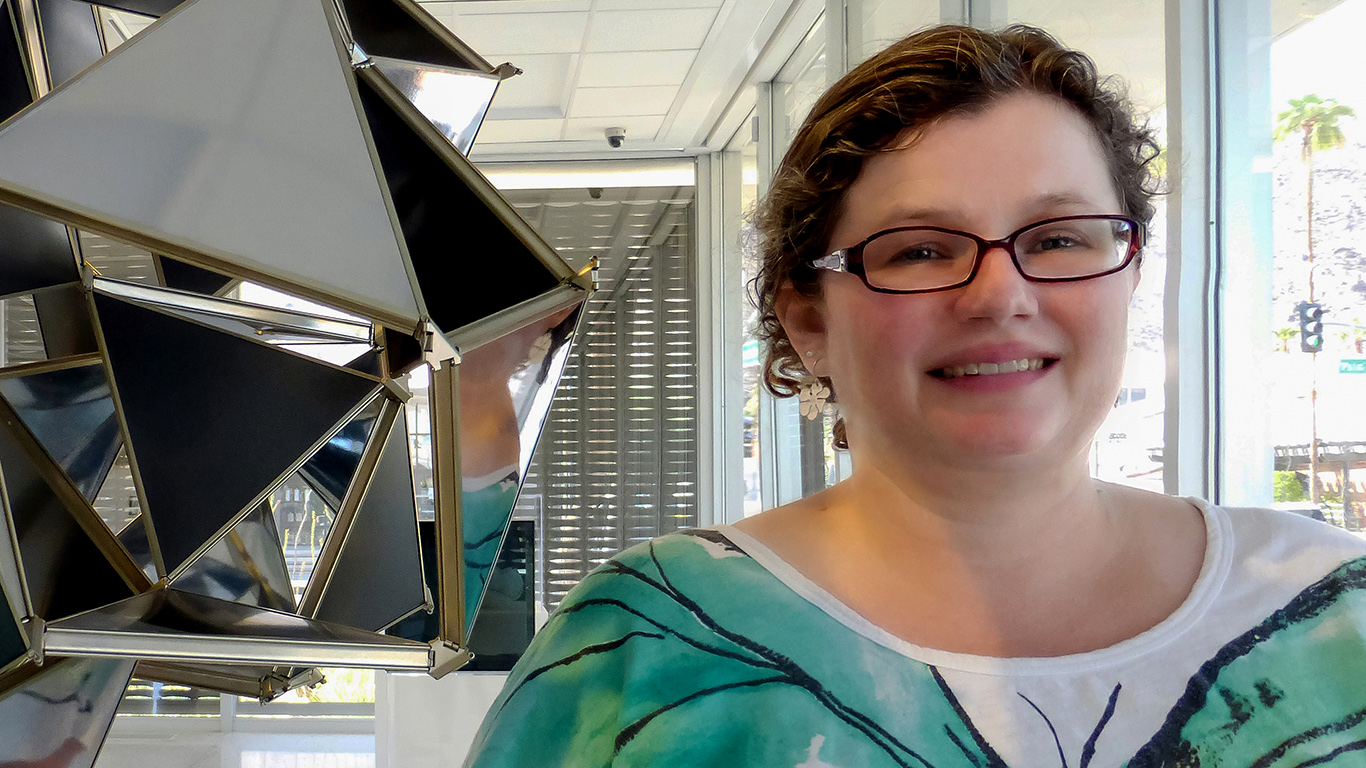
Being a conscientious learner isn’t enough for Associate Professor of Art History Kirstin Ellsworth. She also wants her students to be “knowledge makers.”
“This comes from what is called the social construction of knowledge,” says Ellsworth. “For assignments like research papers, I like to have students choose what they want to write about, develop an argument, and follow the argument through. The students present their arguments verbally or in their writing, and it typically becomes part of the class conversation.”
Ellsworth refers to this inclusive teaching style as self-selected topics that are guided by a thesis. “It really draws out their creativity,” she adds. “So much so that many of my students turn projects that were openly explored during class into research that is presented during Student Research Day.”
The classroom dynamics that Ellsworth have nurtured since her arrival on campus in 2009 has made her CSUDH teaching experience thoroughly enjoyable. She says that every day the students challenge her to make art history relevant to them.
“What is the classroom like when students range in age from 18 to 70, come from different ethnic and racial backgrounds, arrive with a range of academic preparation, and might live what is deemed a middle-class economic lifestyle, or have no home at all?” she asks. “For me, the answer is transformative.”
Her efforts have not gone unnoticed. On April 20, Ellsworth was named the 2021 Lyle E. Gibson Dominguez Hills Distinguished Teacher. The award is given in honor of CSUDH’s late founding vice president for Academic Affairs. It recognizes faculty who manifest in their teaching an understanding of broad areas of knowledge, and whose teaching is not only exemplary and demonstrates an active interest in student progress, but also seeks new and creative ways to engage them.
“I was really moved by winning the award. I think about all the students who I have met (Ellsworth began teaching in 1994 as a master’s student). This award gives me a different level of understanding about myself, and how important teaching is to me,” she explains. “It made me think, ‘You know, I really am a teacher.’ Then I looked back on my career and realized how consistent it has been in my life, and that this is what I love to do.”
While her classes are conversation-driven, Ellsworth also enjoys being a catalyst to knowledge sharing. “I feel it has been a great class when many students have spoken up,” she says. “I’ll ask a question, then see how someone might answer, and then we will typically roll with it based on what was said. I never have a prescribed idea of what a lecture should be. I like to build the conversation from feedback and response.”
Art history offers a glimpse at how people have seen themselves and their world in the past, and a way of interpreting the past and its connection to the present. In her teaching, Ellsworth has witnessed her students – and herself – discover the relevance of art history in real time.
“In my Women in Art course, we are not only looking at the history of women artists, but also exploring and referring to certain themes,” she explains, “For example, if there is something that a woman artist might have experienced, in let’s say the 1800s, I’ll get a lot of interesting responses from students who find and interpret that same theme in an artwork of today. It can be an exciting discovery. Selfishly, I then get to learn about a lot of contemporary artists. When we make such a connection, it is very relevant for my students, and can be one of the most rewarding educational experiences.”
Ellsworth believes that interpersonal connections between students are also germane to the learning experience, particularly when studying art history.
“Connections spring up often when students are in the classroom talking about their ideas. Today in class a student said, ‘I want to read your paper’ to another student who had written about a fashion designer,” she shares. “That was great because I like to build a situation where that can happen routinely. Whether it’s online, in the parking lot, or somewhere else, a semi-organic connection can grow that’s beneficial for both students academically.”
At the same time, Ellsworth often speaks of knowing students as individuals. “I have mentored many students for Student Research Day and have helped them with career plans,” she says. “However, my most successful classes are built upon students sharing their connections to content, and in so doing getting to know one another as individuals. How both teachers and students learn and connect at that point is indescribable.”
For Ellsworth, it is the respect among students that she has witnessed that really makes CSUDH a special place to work.
“This is a group of people with various opinions, and that makes the bar pretty high for conversations,” she says. “But we don’t have to lay the groundwork for students on how to treat those who might have a different point of view. Our students are very sophisticated in that way, and I love it.”

